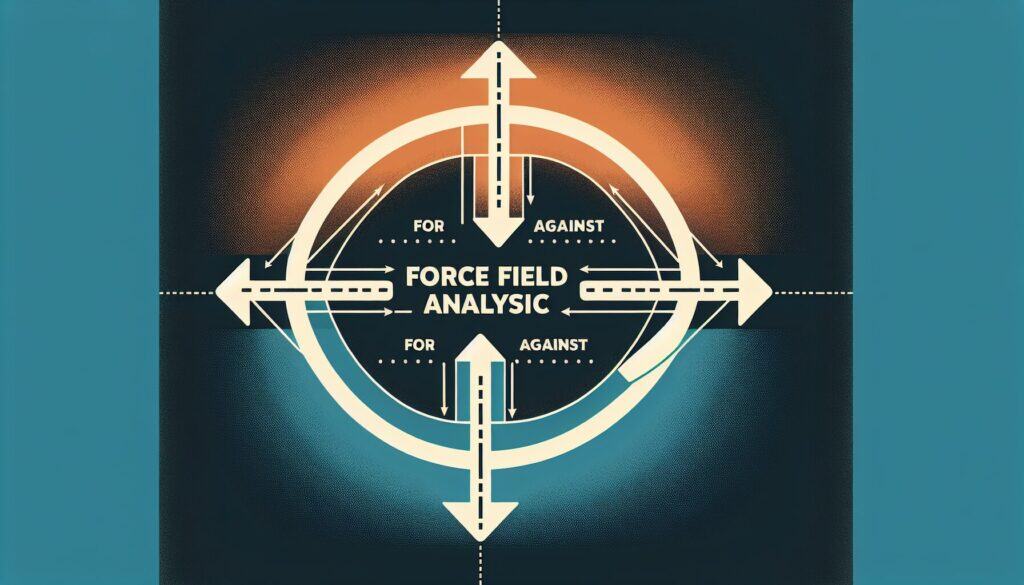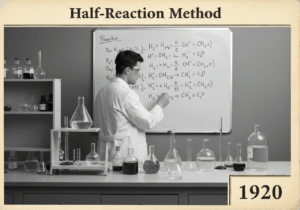Analyser les forces pour et contre un changement proposé.
- Méthodologies : Gestion de projet
Analyse du champ de force

Analyse du champ de force
- Gestion du changement, Amélioration continue, Amélioration des processus, Gestion de projet, Gestion de la qualité, Gestion des risques, Analyse SWOT, Travail d'équipe
Objectif :
Comment il est utilisé :
- Un outil de prise de décision qui implique l'identification des forces motrices (facteurs soutenant le changement) et des forces restrictives (facteurs s'opposant au changement). Une note est généralement attribuée à chaque force et l'analyse permet d'élaborer une stratégie visant à renforcer les forces motrices et à affaiblir les forces restrictives.
Avantages
- Fournit un résumé visuel clair des facteurs influençant un changement ; aide à comprendre les complexités d'une initiative de changement ; facilite la discussion et l'établissement d'un consensus ; aide à développer des stratégies pour gérer le changement de manière efficace.
Inconvénients
- Peut être subjectif dans l'identification et l'évaluation des forces ; Peut simplifier à l'excès des situations complexes ; Ne fournit pas de solution définitive, mais seulement un cadre d'analyse ; Le processus de quantification des forces qualitatives peut s'avérer difficile.
Catégories :
- Ressources humaines, Résolution de problèmes, Gestion de projet
Idéal pour :
- Prendre des décisions concernant un changement proposé en identifiant et en évaluant systématiquement les facteurs qui le soutiendront ou l'entraveront.
L'analyse des champs de force est largement appliquée dans divers secteurs tels que les soins de santé, l'éducation, la fabrication et le développement de logiciels au cours des phases de planification et de mise en œuvre des projets qui impliquent des initiatives de changement. Cette méthodologie est généralement mise en œuvre par des gestionnaires de projet, des agents de changement ou des chefs d'équipe qui cherchent à apporter des modifications significatives, telles que l'introduction de nouvelles technologies ou des réformes dans les politiques organisationnelles. Elle est utile au cours des premières phases des projets, lorsque la compréhension des perceptions des parties prenantes est essentielle à la réussite, ou lors de la réalisation d'évaluations d'impact liées à des changements potentiels. Les participants à ces discussions sont souvent des équipes interfonctionnelles composées d'ingénieurs, de concepteurs, d'analystes commerciaux et d'utilisateurs finaux, ce qui garantit la représentation de divers points de vue. En quantifiant les forces motrices et restrictives, les équipes peuvent visualiser l'équilibre des forces qui influencent le processus de changement, ce qui contribue à faciliter un dialogue ouvert en vue de l'obtention d'un consensus. Par exemple, dans un contexte d'ingénierie, l'analyse des champs de force peut être utilisée pendant la phase de conception d'un nouveau produit pour évaluer les avantages des matériaux de pointe par rapport aux défis potentiels de la production, ce qui permet une prise de décision plus éclairée. En outre, elle soutient la planification stratégique en permettant aux organisations de formuler des mesures concrètes pour renforcer les facteurs de soutien tout en atténuant les résistances, augmentant ainsi la probabilité d'une mise en œuvre réussie dans le cadre d'un processus structuré. gestion du changement cadre.
Principales étapes de cette méthodologie
- Définir clairement l'initiative ou la décision de changement à analyser.
- Identifier et énumérer toutes les forces motrices qui soutiennent le changement.
- Identifier et énumérer toutes les forces qui s'opposent au changement.
- Attribuer des notes à chaque force motrice et restrictive en fonction de leur impact.
- Créer une représentation visuelle des forces motrices et restrictives.
- Analyser l'équilibre des forces pour comprendre les résultats potentiels.
- Élaborer des stratégies pour renforcer les forces motrices et atténuer les forces restrictives.
- Mettre en œuvre les stratégies et surveiller les effets sur les forces motrices et restrictives.
Conseils de pro
- Intégrer le retour d'information des parties prenantes tout au long du processus d'analyse du champ de forces afin d'affiner la compréhension des forces motrices et restrictives.
- Utilisez un système de notation qui quantifie la force de chaque force, ce qui permet des discussions fondées sur des données concernant l'établissement de priorités et l'élaboration de stratégies.
- Revoir et mettre à jour régulièrement l'analyse du champ de forces pour s'adapter à l'évolution des facteurs internes et externes susceptibles d'influer sur l'initiative de changement.
Lire et comparer plusieurs méthodologies, nous recommandons le
> Référentiel méthodologique étendu <
ainsi que plus de 400 autres méthodologies.
Vos commentaires sur cette méthodologie ou des informations supplémentaires sont les bienvenus sur le site web de la Commission européenne. section des commentaires ci-dessous ↓ , ainsi que toute idée ou lien en rapport avec l'ingénierie.
Contexte historique
1902
1907
1915
1915-11
1918
1920
1922
1902
1904
1913
1915
1916
1919-05-29
1920
1924
(si la date est inconnue ou n'est pas pertinente, par exemple "mécanique des fluides", une estimation arrondie de son émergence notable est fournie)















Articles Similaires
Questionnaires sur les troubles musculo-squelettiques
Tests à plusieurs variables (MVT)
Analyse de régression multiple
Systèmes de capture de mouvement
Méthode MoSCoW
Test de la médiane de Mood